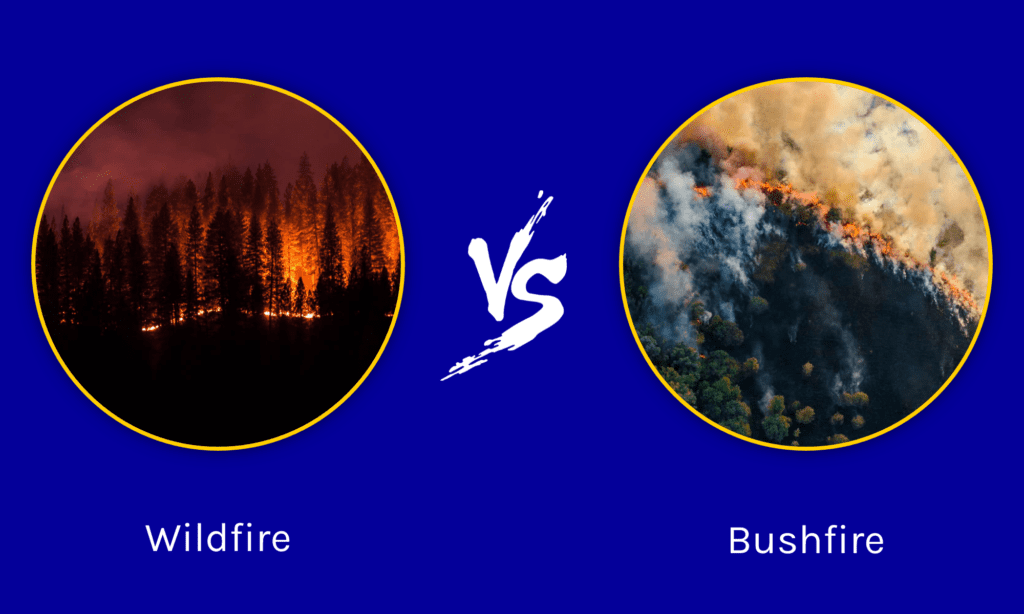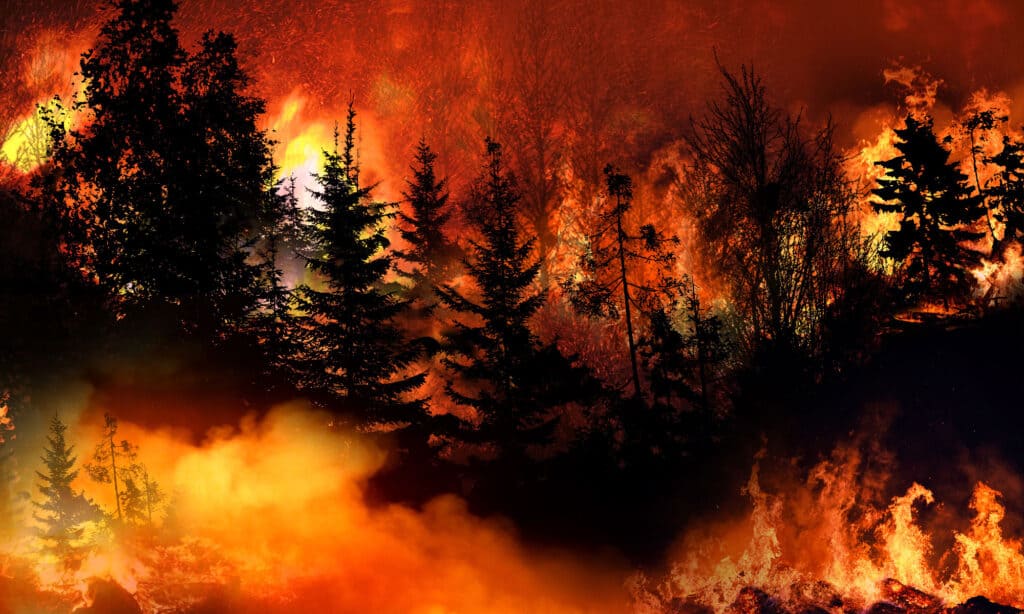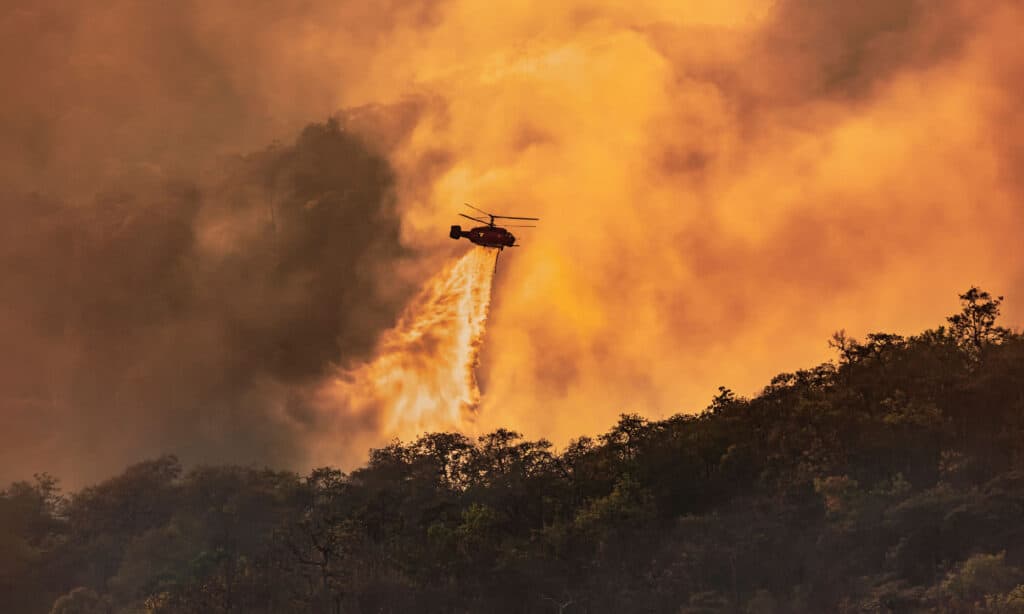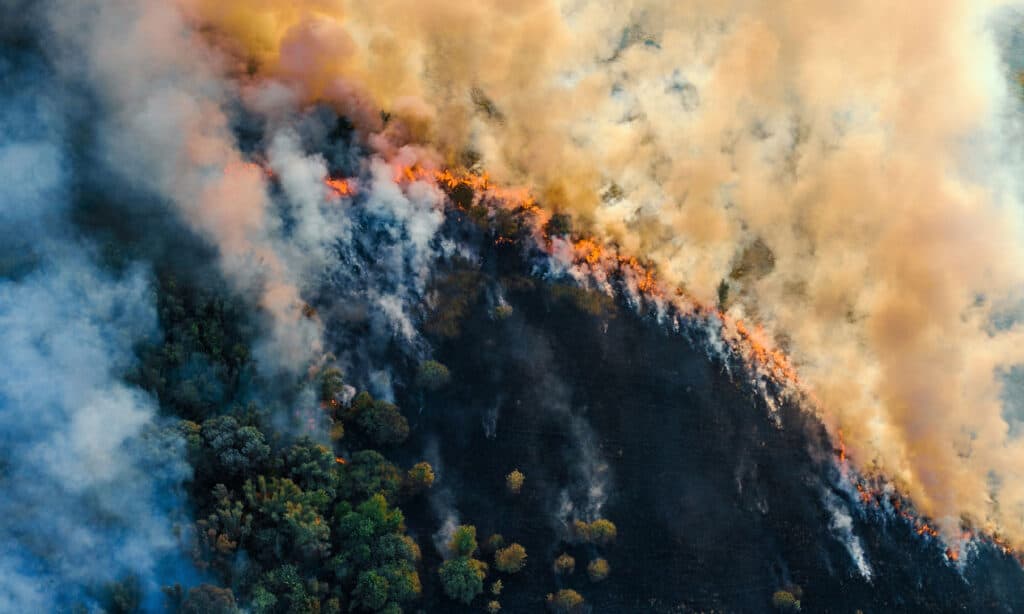Fire is a part of nature, and it helps shape ecosystems by acting as a catalyst for regeneration and change. However, fire may be devastating, destroying homes, wildlife habitats, and forests and contaminating the air with hazardous emissions. Wildfire risk and severity are increasing as a result of climate change. Wildfire hazard is influenced by temperature, soil moisture, and the number of trees, bushes, and other potential fuels. These elements are either directly or indirectly associated with climate change and fluctuations.
More often than not, we hear wildfire and bushfire terms being used interchangeably. While “wildfire” is a collective term for all types of wildfire, a “bushfire” is distinct in its own way. Many people mix up these two sorts of fires, but they are slightly different in some aspects. Wildfires are massive fires that spread rapidly through natural areas such as forests or grasslands and are difficult to contain. A bushfire is an uncontrolled fire that spreads across vast swaths of scrubland in many parts of the world, including Australia and portions of Africa. In this article, we will compare and contrast the features of wildfire and bushfire, and it will also equip you with the proper knowledge on how to prevent them from occurring.
Comparing Wildfire and Bushfire

| Wildfire | Bushfire | |
|---|---|---|
| Primary Triggers | – Mostly caused by human carelessness | – Natural causes such as lightning |
| Ways of Spreading | – Controlling wildfire can be difficult – Wildfires spread faster | – Bushfires are more controllable – Bushfires move slower than wildfires, but fast nonetheless |
| Local Terminology | – Mainly used in United States | – Mainly used in Australia |
The 3 Key Differences Between a Wildfire and a Bushfire

Wildfires can affect the quality of rivers, lakes, and streams in the short and long term.
©iStock.com/Dimple Bhati
The main distinction between wildfires and bushfires is their impact. Wildfires can affect the quality of rivers, lakes, and streams in the short and long term. Stormwater runoff is the most visible effect of wildfires. The soil becomes hydrophobic after vegetation is lost, preventing water absorption. This failure to absorb water encourages debris and silt to be transported into larger bodies of water, further contaminating valuable and necessary resources.
The intensity of a bushfire is also significant. A large bushfire can have several direct effects on life and property, wildlife population survival, water supplies, and an indirect impact on government finances and insurance costs. A large bushfire will also produce a significant amount of smoke.
There are other significant differences between these two disasters. Let’s discover what they are!
Wildfire vs Bushfire: Primary Triggers

Wildfire spreads at a faster rate than bushfires.
©iStock.com/Toa55
Three elements are vital for creating fire: fuel, oxygen, and heat. The “fire triangle” is a term used by firefighters to describe this combination of factors. Drought conditions peak on hot days, and even a tiny spark can start a massive wildfire with deadly repercussions. Although the sun or a lightning strike can create fire, most wildfires are caused by human carelessness. 84% of wildfires are ignited by unattended campfires, lighted cigarette butts, improperly burned garbage, and arson. Wildfires caused by humans have increased the fire season from 46 to 154 days, at a cost of $2 billion. Wildfires, once thought to be a natural phenomenon caused by lightning, are now being recognized as the product of a human mistake.
Bushfires can be caused by both human and natural sources. But lightning is the most prevalent natural cause of ignition, accounting for around half of all bushfires in Australia. The remaining are caused by humans and are classified as either accidental or intentional. Fires started intentionally may be the consequence of arson, or it may have been intended to accomplish a favorable outcome but circumstances changed, resulting in an uncontrollable spread.
Unfortunately, fires started intentionally or unintentionally by humans are more common near populated areas, resulting in a disproportionately higher risk of infrastructural damage. Arsonists endanger lives and property, mainly when they cause fires under hazardous weather conditions.
Wildfire vs Bushfire: Ways of Spreading

Bushfires can be caused by both human and natural sources.
©iStock.com/DedMityay
The majority of the time, wildfires are undesirable and difficult to control. The fire is tough to put out and is exacerbated by heat or high temperatures. The wildfire becomes more powerful when it receives sufficient oxygen, which is present in the vegetation areas where it most commonly occurs. This is why combustible vegetation is in serious danger of catching fire. Because the wildfire is so intense, there is no exact strategy to suppress it. Wildfire spreads at a faster rate, and as a result, has consequences. Places with a high moisture content could help mitigate the effects of wildfire, and moisture would aid in temperature regulation and fire suppression.
The risk of bushfires is lower than that of wildfires. Bushfires can kill animals and people, but this is uncommon. A hot temperature, a burning source, fuel, and low moisture content are required for bushfires. When compared to wildfires, bushfires produce a lot more heat. The bushfire also moves slowly, but its nature is deadly. Bushfires can be managed in certain circumstances, but not all the time. Its duration is determined by the local climate conditions and environmental factors, and if the fire does not get the resources to burn, it can linger for several days.
Wildfire vs Bushfire: Local Terminology
Generally, fires get their names based on where they start, and they usually get their names from winding country roads, local landmarks, or mountain peaks. Unlike hurricanes, which are given human names from a list selected in advance by the World Meteorological Organization, wildfires are given names much more intuitive: whatever makes it most accessible for firefighters to locate a fire and nearby residents to track the fire’s path consistently. In the US, “wildfire” is the umbrella term for all types of fire in a wildland area.
The Australian name for the wild, mostly uninhabited area of the land is “bush.” It doesn’t have to be extensively forested (and has nothing to do with the ‘bush’ being “shrub”). Small towns can exist in the bush. In Australian English, any fire in that area is referred to as a “bushfire.”
The photo featured at the top of this post is © iStock.com/ProPics Canada Media Ltd
Thank you for reading! Have some feedback for us? Contact the AZ Animals editorial team.






